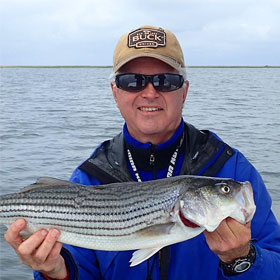Ten Keys to Live Bait Fishing Success
By Ken Schultz
Aug 03, 2022
Live bait fishing success is dependent on much more than just choosing and hooking a bait; here are the key things to know regardless of what you’re fishing for
Using live fishing bait can be very eventful and productive, but it’s not a guarantee of having success over using dead bait or artificial lures. Some anglers have a preference for using live fishing bait, however, and with some saltwater and freshwater fish species, live bait fishing is a preferred method because it generates good success. Obviously, different types of live bait are use in freshwater versus saltwater.
Here are the keys to success when live bait fishing, regardless of what species you pursue:
1. Use fresh bait
The single most important factor in using live fishing bait is that the bait be fresh and lively. An alive but lethargic minnow, for example, is often just as bad as a dead one, so replace bait frequently to keep a frisky offering in the strike zone.
2. Use bait that is common to the area
Often, not any live bait will do. When selecting live baits for fishing, use whatever is common to the area and to the diet of the fish you seek.
3. Use the right size
Correlate bait size to target-species size and also available forage. Smallish baits do catch large fish, but a larger offering often is better if you have a choice.
4. Store it in proper conditions
You must keep live fish bait well aerated and at a proper temperature. This will vary with the type of bait species.
5. Store it in the proper container
Live non-fish bait, such as earthworms, leeches, crickets, shrimp, and so forth, also need to be in a proper container, preferably insulated, and with appropriate bedding material. Keeping these baits cool, and not exposed to sun and heat, is better for their longevity and liveliness.
6. Use the right hook
Proper hook selection depends not only on type of bait, but on the species being sought. Large hooks, for example, are a hindrance when fishing with worms for freshwater panfish.
7. Use an appropiate hooking technique
Live baits are not all hooked the same way, and how you hook them depends on their size, how and where you’re fishing, and what you’re fishing for, as these instructions illustrate. Live baitfish, for example, can be hooked through the lips, nostrils, upper back, or tail.
8. Use the right weight
Whether or not to use a lead or lead-alternative weight depends on the circumstances, but usually it’s best to use the lightest weight that will keep bait where it needs to be. This aids in bait movement and natural appearance.
9. Consider using a leader
Using a leader and light line usually improves the action of live bait, and often results in better success.
10. Select a circle hook
A circle hook is mandatory in bait use for some species of fish, primarily in saltwater, so be aware of local bait-use regulations. It’s also preferable in some circumstances to other hook styles, because it usually results in lip hooking and prevents deep hooking, which is beneficial for fish to be released.









